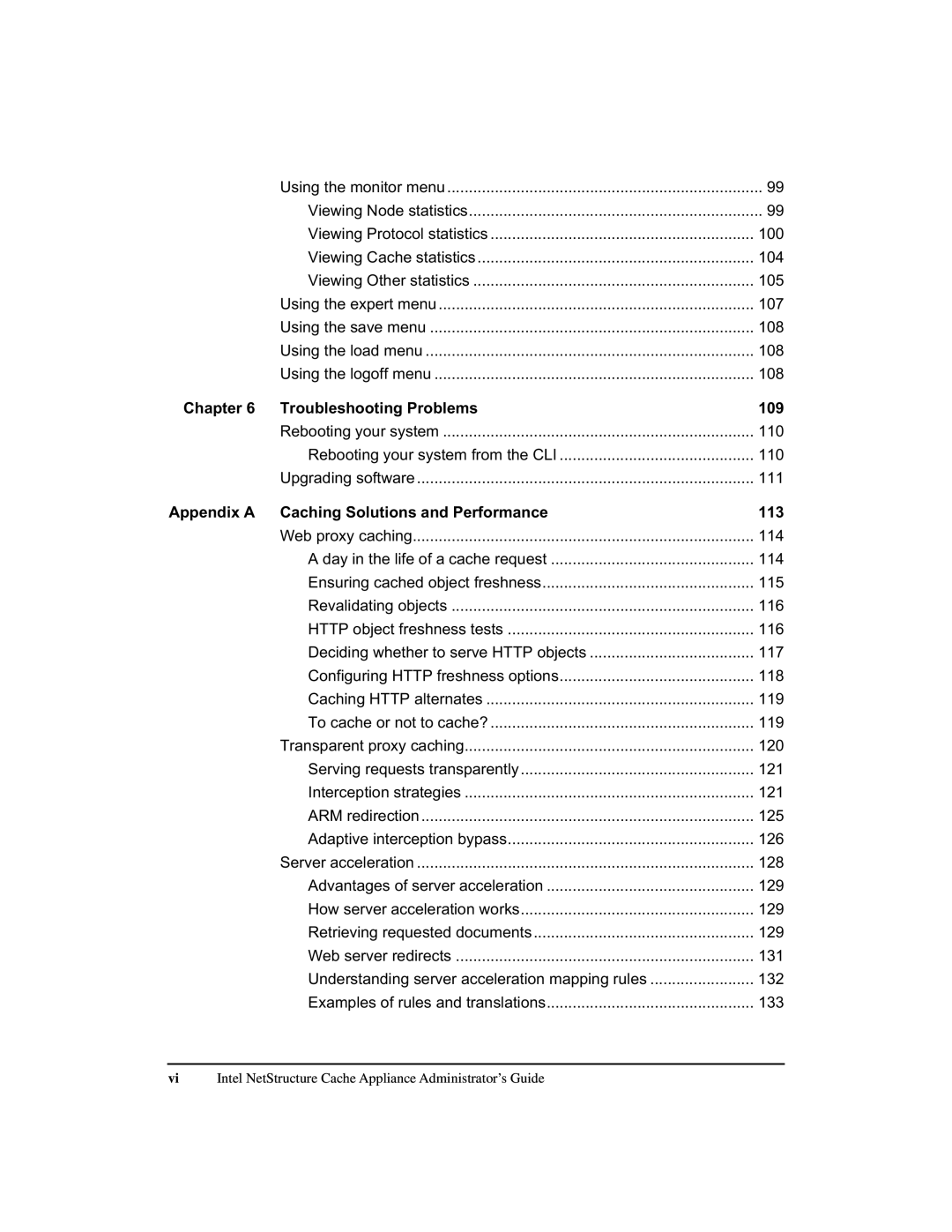Using the monitor menu | 99 |
Viewing Node statistics | 99 |
Viewing Protocol statistics | 100 |
Viewing Cache statistics | 104 |
Viewing Other statistics | 105 |
Using the expert menu | 107 |
Using the save menu | 108 |
Using the load menu | 108 |
Using the logoff menu | 108 |
Chapter 6 Troubleshooting Problems | 109 |
Rebooting your system | 110 |
Rebooting your system from the CLI | 110 |
Upgrading software | 111 |
Appendix A Caching Solutions and Performance | 113 |
Web proxy caching | 114 |
A day in the life of a cache request | 114 |
Ensuring cached object freshness | 115 |
Revalidating objects | 116 |
HTTP object freshness tests | 116 |
Deciding whether to serve HTTP objects | 117 |
Configuring HTTP freshness options | 118 |
Caching HTTP alternates | 119 |
To cache or not to cache? | 119 |
Transparent proxy caching | 120 |
Serving requests transparently | 121 |
Interception strategies | 121 |
ARM redirection | 125 |
Adaptive interception bypass | 126 |
Server acceleration | 128 |
Advantages of server acceleration | 129 |
How server acceleration works | 129 |
Retrieving requested documents | 129 |
Web server redirects | 131 |
Understanding server acceleration mapping rules | 132 |
Examples of rules and translations | 133 |
viIntel NetStructure Cache Appliance Administrator’s Guide
